Interviews
The exhibition Organising Freedom gathers works from 29 Nordic artists. Annika Hansson has talked to eleven of them – about their work, intentions, themes, and about how they fit into a national versus an international context. She also poses the question whether or not Nordic art and the attention it has attracted could be defined as a phenomenon.
Knut Åsdam (b.1968, Norway)
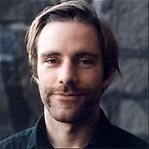
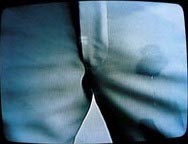
Pissing, 1995
Video, utan ljud, 50-60 sek intervall
Knut Åsdam’s works regularly centre on narrative spaces and contain direct reference to social environments and meeting places in the city. His architectural installations are as much architectural situations. The room itself determines the shapes of social behaviour, in the form of contacts and non-contacts, relations and non-relations. “Psychastenia” can be interpreted as representing the environment of a nightclub, or a sex club. There’s also a possible link to the environment of the club as some kind of exhibition hall, and to the functions presently served by the museum.
Annica Karlsson Rixon (b.1962, Sweden)
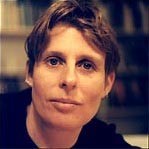
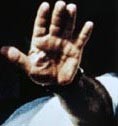
From the series Hands and Monochromes, 1999
Färgfotografier typ C, video monitor, 70 x 70 cm, 110 x 110 cm
Annica Karlsson Rixon has spent countless hours along the highway between San Francisco and Los Angeles. Her works “Truckers and Others” (1999) and “Hands and Monochromes” (1998) are the results of her taking photographs of the trucks that are always present on this stretch of the road. In preparing the materials, paradoxically, these colossal vehicles, as well as their drivers, take on a poetic character. An unexpected sensitivity creeps forth through the male dominated trucker culture.
Joachim Koester (b. 1962, Denmark)
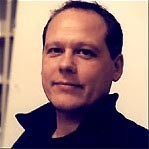
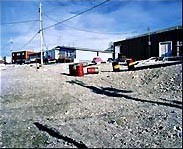
Ur serien Row Housing, 1999
15 Färgfotografier typ C & sv/v fotografier, vardera 60 x 80 cm
Joachim Koester’s sequence of photographs “Row Housing” shows, literally, how Europe’s grand utopias have been shipped to the Arctic regions, and how they’ve been left there, stranded. The photographs were taken in the small settlement of Resolute Bay, in northernmost Canada. The town was built as a social experiment when the Inuit population was forced to move there during the cold war. Still today, the town shows traces of the different, collapsed, European visions of the past centuries. In the harsh monotonous landscape, where only daylight adds variation, even the houses resemble foreign objects – as if they still had doubts whether or not they really belong there.
Elin Wikström (b.1965, Sweden)
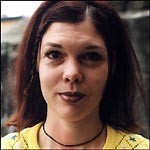
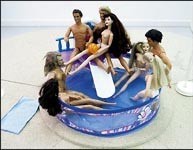
Gen Girls Removed from Box; Barbie Videoing Nichelle; Chelsie and Lara! Tori Performing for BARBIE and Nichelle! Ana in the Swim Meet!, 1999.
Barbiedockor, flaskbackar, brickor, hyllor, video
Earlier, Elin Wikström’s work has been connected to concrete situations in time and space. This time, however, her project rather takes the form of a model or proposal for such a situation. The work examines the possibilities of a form for love different from the nuclear family and the monogamous relationship. At the same time she tests the strength of the romanticized myth of love, examining the way in which female sexuality is being kept in check by public, legal, economic, and social institutions. This testing comes to expression in the role play “The Solitary Snake Pit Love Affair” featuring Ken and Barbie dolls, and which the visitors to the museum can follow or take an active part in. * The role play takes place between 2 pm and 6 pm every day as a part of the exhibition Organising Freedom and is for adults only. For more information kontact Catarina Tesdorph, Moderna Museet, tel 08-5195 5246.
Jens Haaning (f 1965, Danmark)
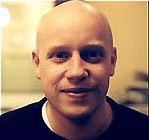
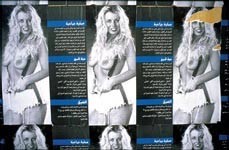
Arabic Jokes, 1996
Photo: Dorte Krogh
Jens Haaning’s work centres on the seams between different political, economic, social and cultural worlds and values. His series of pictures of young, clothes-conscious men with their roots in Morocco, Pakistan and Turkey have the hallmarks of any fashion piece in any magazine. But Haaning charges the well-known medial form with a special kind of dynamite, showing among other things how the men in their new Nordic country try to compensate for “wrong” skin colour by wearing the “right” clothes. It’s a jarring pointer about the discord present in a region convinced of its own tolerance while large parts of its population sense something completely different.
Matts Leiderstam (f. 1956, Sverige)
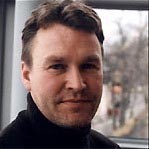
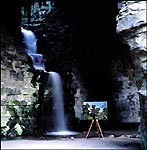
Paris 15.03.1999: Parc des Buttes-Chaumont
Installation, diaprojektion
Matts Leiderstam’s work “Paris, 15.03.1999: Returned, Parc des Buttes Chaumont” is the latest addition to Returned, a project spanning several years. Within that project, he combines art history with contemporary gay culture by performing constant dislocations of time, space, and interpretation in Nicolas Poussin’s painting Spring or The Earthly Paradise. The installation and projection of Matts Leiderstam’s work is presented as another version of overlapping reconstructions and complex layers of meaning; in other words, as a memory.
*Le Printemps ou Le Paradis Terreste, 1660-1664, Rom
Torbjørn Rødland (f. 1970, Norge)
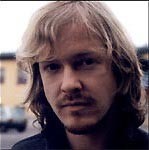
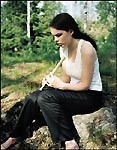
The Wait, 1998
Colour photography type C, 50 x 40 cm,
In the works of Torbjorn Rodland, the Norwegian landscape is always present: the lush greenery and the grand wilderness. He picks his motifs from the Romantic painting tradition – a clearing in the woods, mountains, sweet young maidens posing with flutes and animals – and transfers them to the realm of popular photography. But in the outdoor sceneries and the conventions of kitsch there’s a creeping anxiety: an omnipresent uneasiness manifested by dumped car wrecks and the exposed root system of trees. It’s a reminder of the human desecration of nature, and in Rodland’s image universe it’s plain to see that nature is about to take its grim revenge.
Mads Gamdrup (f. 1967, Danmark)
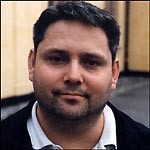
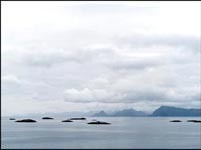
21.6.1999, 1999
9 photographs taken between 24.00, 990620 and 24.00, 990621
Mads Gamdrup’s series of photographs “21.6.1999” is concerned with that day of the year that might have occupied Nordic artists more than any other over the years: Midsummer Eve. Naturally enough, the starting point of the work is the Danish Romantic landscape-painters. All the way up in Norway’s Lofoten, Mads Gamdrup left the shutter of the camera wide open for hours on end, facing the sky, the sun and the harsh landscape. In every photograph, therefore, there’s an amount of light impossible to see with the eye alone. The end result is some kind of hyperrealism starting where our own senses fail.
Maria Hedlund (f. 1961, Sverige)
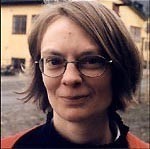
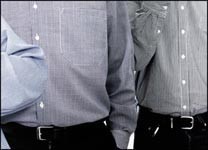
Mediations, 1999
Colour photography type C.
In the works of Maria Hedlund, the most trivial details of everyday life take on an almost monumental character. This is not to do with big formats primarily. Rather, it’s the result of Hedlund’s working with the formal composition of the photograph, her focus on details, the volume of the motif and the different distances within the image. Men in small-checked shirts form the motif in “Betraktelser/Meditations”, but as an observer you’re as likely to see something completely different. The shirts and the patterns offer a varied topography that invites a number of different impressions, and, ultimately, a different image of everyday life.
Jouko Lehtola (f. 1963, Finland)
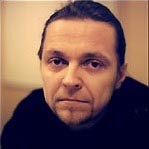
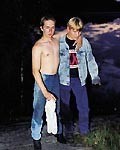
JOUKO LEHTOLA
Young Heroes, 1995-1996
Colour photography type C.
Jouko Lehtolas verk “Young Heroes” (1995-96) är en serie fotografier av ungdomar i en frizon bortom vardagens kontroll av föräldrar, skola och hemmet. Med sugmärken, tatueringar och blåmärken ser de oförskräckt in i kameran. Alkoholen är allestädes närvarande liksom det finländska sommarlandskapet. Bilderna är tagna på musikfestivaler som är ett näst intill obligatoriskt sätt att roa sig för stora skaror ungdomar i hela Norden. Under några dagar och nätter gör de precis vad de vill, långt borta ifrån pojk- och flickrummen. “Young heroes” skildrar en högt koncentrerad dos frihet och en kaotisk anhalt på vägen mot vuxenlivet.
Annika Eriksson (f.1956, Sverige)
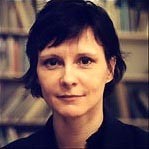
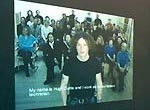
Staff at Moderna Museet, Stockholm, 2000
Video projection.
The works of Annika Eriksson frequently deal with the group as a social hierarchical structure. In several of her works, she has portrayed people whose social dynamics and sense of kinship are defined by a certain occupation, at work or in the free time. The video piece “Moderna Museets Personal, Stockholm, 2000/Staff at Moderna Museet, Stockholm, 2000” works as a portrait of every individual staff member as well as of the entire staff. The work is projected in the same environment that is was made in. As usual, Annika Eriksson leaves it to the visitor to interpret prevailing hierarchical and social structures within the group.
